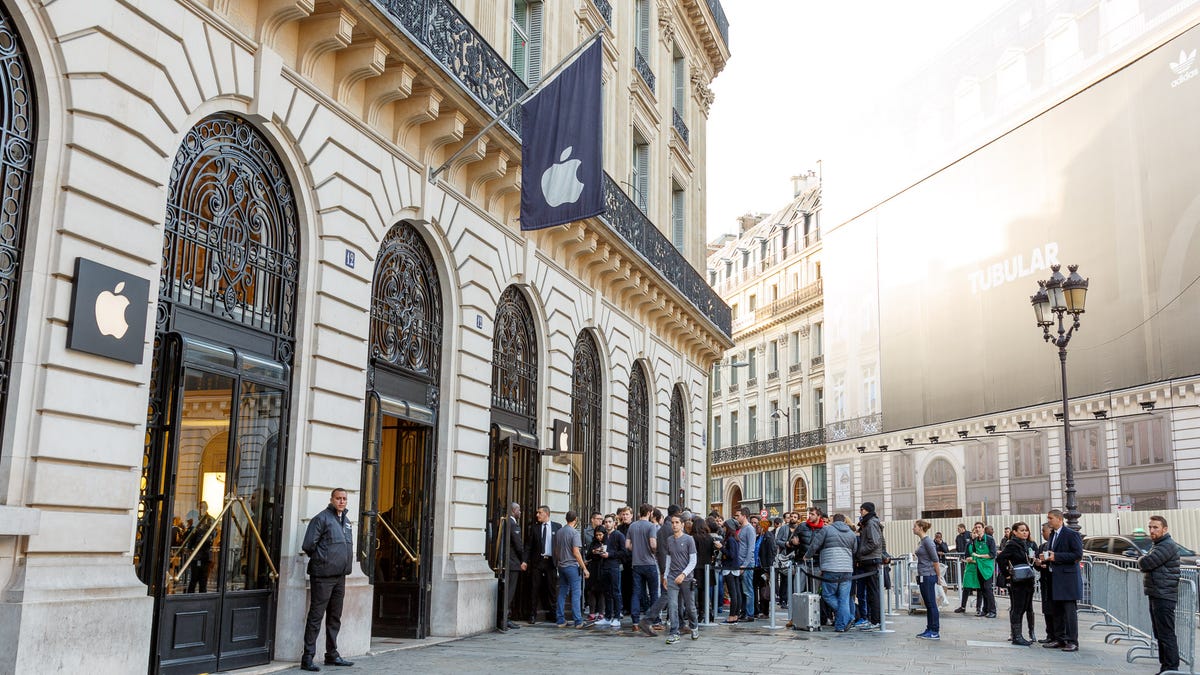Apple sales down, but iPhone 7 offers glimmer of hope
Despite struggling with weak phone demand, the company manages to report better-than-expected quarterly results.

The doomsday scenario for Apple's quarterly results will have to wait.
The company on Tuesday reported slightly better-than-expected fiscal third-quarter earnings, revenue, and iPhone and iPad sales. It also gave a forecast for fiscal fourth-quarter revenue that wasn't as bad as feared.
"We are pleased to report third-quarter results that reflect stronger customer demand and business performance than we anticipated at the start of the quarter," Apple CEO Tim Cook said in a press release.
"We have an incredible lineup of products in our pipeline, and I'm incredibly bullish about our long-term opportunity," Cook said during a call with analysts.
Apple still makes a ton of money, but its primary product -- the iPhone, which accounts for about two-thirds of sales -- isn't selling as well as many would like. The problem is that people have become a bit blase about phones. In places like the US, nearly everyone who wants a phone has one. Meanwhile, economic woes have hurt sales in China. In April, Apple reported its first drop in phone sales, and many feared the worst for the third quarter, typically the company's weakest period because it comes right before a new iPhone launch.
The company on Tuesday again reported a slide in iPhone sales, but the decline was less than some expected. Apple said it sold 40.4 million iPhones during the period, fewer than the 47.5 million sold last year but better than the 39.7 million units Wall Street had estimated, according to Bernstein analyst Toni Sacconaghi.
Sales "reflect stronger customer demand and business performance than we expected just 90 days ago," Cook said during the call with analysts. He added that demand for the iPhone SE, the new 4-inch phone Apple released in late March, outstripped supply throughout the quarter. Apple now has enough supply to meet demand, he said.
Apple projected revenue of $45.5 billion to $47.5 billion for the current quarter, better than the $45.7 billion predicted by analysts polled by Thomson Reuters. Apple's fiscal fourth quarter, which ends in September, is the back-to-school shopping season. The period also typically gets a boost from the first days of new iPhone sales and offers a signal of how well Apple thinks its new phone will sell.
This time, though, Apple may not make big changes to its next iPhone. The latest rumors point to minor updates, with Apple saving its big design alterations for its 10th anniversary iPhone next year.
Still, Apple's forecast was enough to please Wall Street. Shares rose 7.1 percent to $103.65 in after-hours trading.
"We believe the guide implies the business is perhaps not as bad as expected," Piper Jaffray analyst Gene Munster said.
All falls down
Overall revenue slid 15 percent to $42.4 billion. Analysts polled by Thomson Reuters had expected $42.1 billion.
Net income dropped to $7.8 billion, or $1.42 a share, from $10.7 billion, or $1.85 a share, a year ago. Wall Street had forecast per-share earnings of $1.38.
Revenue dropped in every region except Japan, with the Americas down 11 percent to $18 billion and Greater China down a whopping 33 percent to $8.8 billion. Sales in Japan rose 23 percent to $3.5 billion.
Unit sales for iPads dropped for the 10th straight quarter -- down 9 percent to 9.95 million -- as people continued turning to their larger-screen phones for the tablet experience. Analysts had forecast sales of 9.2 million units, according to Sacconaghi.
Revenue from the iPad rose 7.4 percent, though, as Apple benefited from demand for the pricier iPad Pro. The company introduced a 12.9-inch version of the device in November and a 9.7-inch version in March. Financial chief Luca Maestri said the average selling price for the iPad rose to $490 from $415 a year ago because of the iPad Pro.
In April, Cook said Apple would "have the best [comparison] for iPad revenue this quarter that we have had in quite some time," indicating iPad sales may not fall much further.
Another bright spot for Apple was revenue from services, which jumped 19 percent from the previous year.
Mac sales, meanwhile, dropped 11.3 percent to 4.3 million units amid a decline in the broader computer industry. Analysts had expected Apple to sell 4.4 million Macs during the quarter.
Updated at 2:35 p.m. PT with analyst comment and remarks from Apple's conference call.

